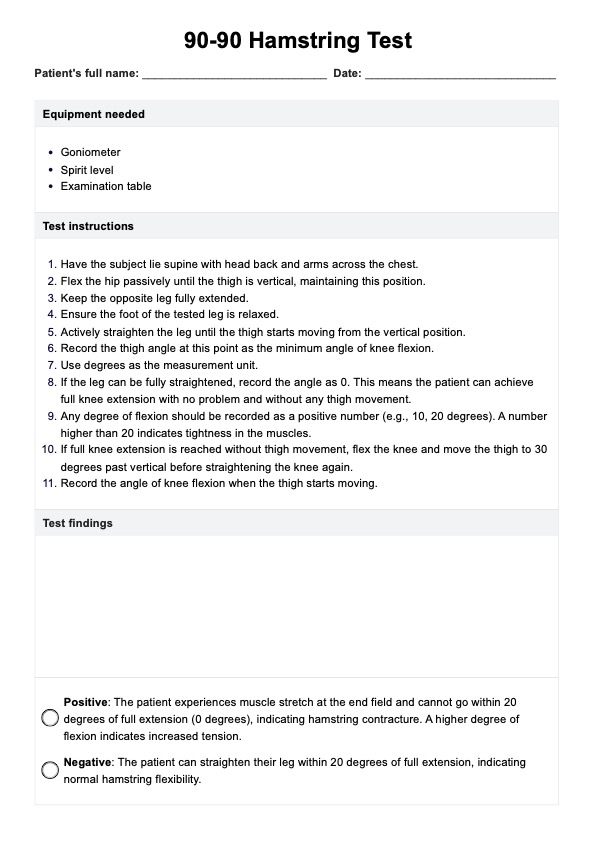The 90-90 Hamstring Test helps assess the hamstrings' flexibility and range of motion. It can also identify imbalances between the left and right sides.

90-90 Hamstring Test
Learn how to perform the 90-90 Hamstring Test. Access a free PDF template and example here.
Use Template
90-90 Hamstring Test Template
Commonly asked questions
The test is generally considered safe, but proper technique and not pushing beyond one's limits are essential to avoid potential strains or injuries.
The frequency of the test can vary depending on individual needs and goals. The healthcare professional conducting the test will and should be able to determine the most appropriate frequency for a person's specific situation.
EHR and practice management software
Get started for free
*No credit card required
Free
$0/usd
Unlimited clients
Telehealth
1GB of storage
Client portal text
Automated billing and online payments











